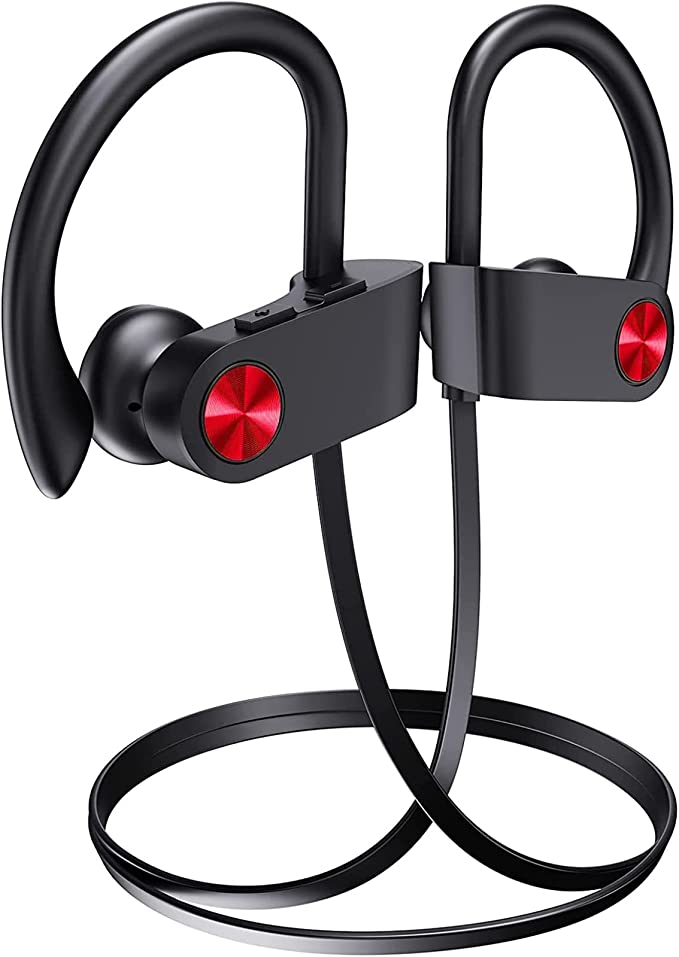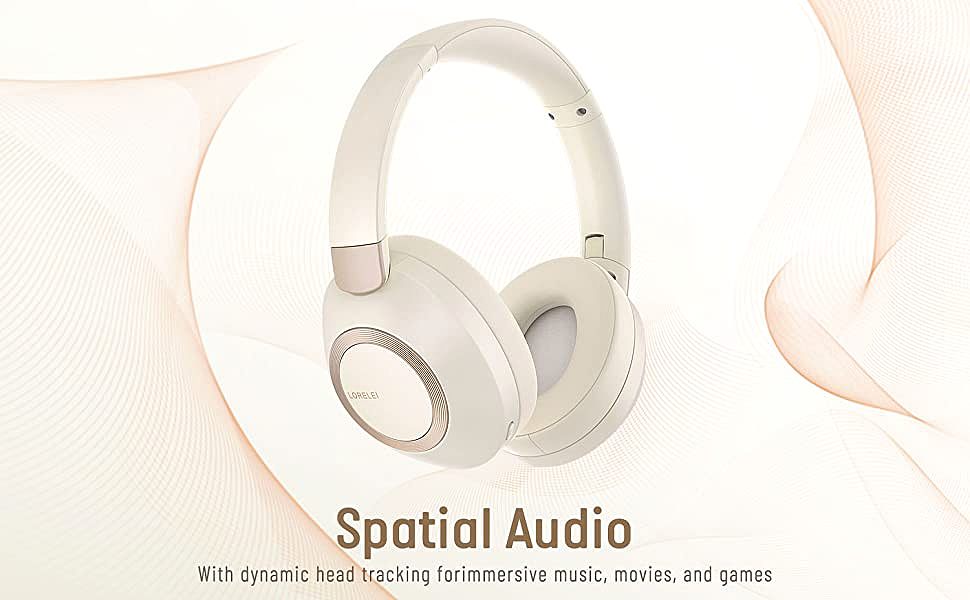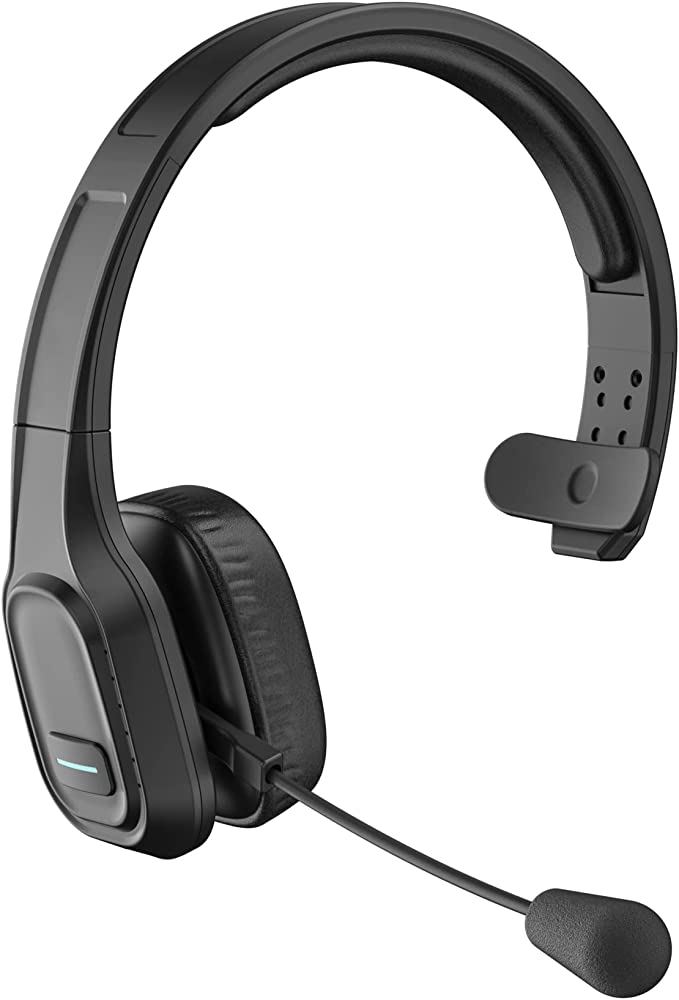We live in an increasingly untethered world. From our phones to our laptops, wireless technology surrounds us, quietly working its magic. Perhaps nowhere is this more apparent than with the earbuds nestled in our ears, piping music, podcasts, and calls directly into our lives without a single physical cable connecting them to our devices. They’ve become ubiquitous companions for workouts, commutes, and everyday tasks.
But as commonplace as they are, the technology packed into these tiny devices can often feel shrouded in mystery. We see terms thrown around – “Bluetooth 5.3,” “IPX7,” “CVC noise cancelling” – but what do they actually mean for our listening experience? Do they genuinely make a difference, or are they just marketing buzzwords?
Let’s embark on a journey to decode some of this technology. We’ll use the VRIFOZ U8I Bluetooth Headphones as our case study, relying on their product information as a tangible starting point. Think of this not as a review, but as a friendly exploration into the fascinating science and engineering principles that power the earbuds you might use every day. Our goal? To move beyond the jargon and understand the ‘why’ and ‘how’ behind the features.

The Invisible Handshake: Making Sense of Bluetooth 5.3
The first interaction with any wireless earbuds is pairing them – establishing that invisible connection with your phone or computer. The VRIFOZ U8I description highlights its use of Bluetooth 5.3, claiming it allows for “quicker pairing and more stable connections,” ensuring “perfectly synchronized audio and video.” So, what’s going on under the hood?
At its heart, Bluetooth is a standardized technology for short-range wireless communication – think of it like a sophisticated, low-power digital radio signal designed to replace cables over short distances. It operates in a specific frequency band (around 2.4 GHz, similar to some Wi-Fi). Like any technology standard, Bluetooth evolves. The Bluetooth Special Interest Group (SIG), the body overseeing the standard, periodically releases new versions. Each iteration generally aims to improve upon previous ones in areas like data transfer speed, connection range, energy efficiency, and reliability.
While the specific technical advantages of version 5.3 over its predecessors (like 5.0 or 5.2) involve complex details about channel sounding, periodic advertising enhancements, and connection subletting (which improve efficiency and robustness), the goal for the end-user remains consistent: a more seamless and reliable experience. According to the U8I’s description, this translates directly to benefits we can appreciate: faster initial connection, fewer annoying audio dropouts when you put your phone in your back pocket or move around, and better synchronization between the sound you hear and the video you watch (reducing that jarring lip-sync delay).
Imagine jogging through a park, your favorite playlist providing the rhythm. A stable Bluetooth connection, as aimed for by standards like 5.3, means the music should flow uninterrupted, becoming a reliable part of your experience rather than a source of frustration. That’s the ideal the ‘invisible handshake’ of Bluetooth strives for.

Crafting Your Personal Concert (and Clear Calls)
Once connected, the primary purpose of earbuds is, of course, sound. This involves both listening to music or podcasts and potentially making or taking calls.
Part A: The Music Experience
The VRIFOZ U8I product details promise “High-quality Stereo Sound” with “HiFi Bass,” delivered via “upgraded dynamic drivers and CSR chips.” Let’s unpack these terms.
- Stereo Sound: This is fundamental. It means audio is split into two distinct channels, left and right, fed separately to each earbud. This creates a sense of spaciousness and directionality in the sound, mimicking how we hear naturally.
- Dynamic Drivers: These are the workhorses inside most earbuds and headphones – essentially, tiny loudspeaker systems. Think of a miniature speaker heart: an electromagnet moves a voice coil attached to a flexible diaphragm. As the coil moves back and forth rapidly in response to the audio signal, the diaphragm vibrates, pushing air and creating the sound waves that travel down your ear canal. “Upgraded” suggests the manufacturer has aimed for improvements in the driver’s design or materials, potentially for better clarity, wider frequency response, or lower distortion compared to previous or basic models.
- HiFi Bass: “HiFi” stands for High Fidelity, which represents the ideal goal of reproducing sound as accurately and faithfully as possible to the original recording. Achieving true high fidelity, especially in tiny earbuds, is a significant engineering challenge. The mention of “rich, powerful bass” indicates a specific tuning choice – the earbuds are likely designed to emphasize the lower frequencies (the thump and rumble in music). This is a popular tuning profile, particularly for genres like pop, electronic music, and hip-hop, and often desired for workout motivation.
- CSR Chips: These are integrated circuits (chips) often found in wireless audio devices. They typically handle multiple tasks, including managing the Bluetooth connection, receiving the digital audio data, converting it from digital to analog (a function performed by a DAC – Digital-to-Analog Converter), and amplifying the signal to drive the dynamic drivers (often part of a System-on-a-Chip, or SoC). The quality and capabilities of this chip play a significant role in the overall sound processing and connection performance.
Put together, these components aim to create an engaging listening experience. When you’re powering through that last set at the gym, the goal is for the sound to be immersive, clear, and motivating, driven by these tiny engines working in concert.
Part B: Being Heard – The CVC Difference
Earbuds aren’t just for listening; many, like the U8I, include a built-in microphone for calls. The description highlights a “microphone with advanced CVC 6.0 noise cancellation technology” designed to “effectively block out external noise” for “clear hands-free calls.”
It’s crucial to understand what CVC (Clear Voice Capture) does – and what it doesn’t do. CVC is a suite of algorithms primarily focused on improving the quality of the audio being transmitted from the microphone. Think of it as a sophisticated filter applied to the sound your microphone picks up before it’s sent to the person you’re calling. It analyzes the incoming sound, attempts to distinguish your voice from background noise (like wind, traffic, or office chatter), and suppresses that unwanted noise. The goal is to make your voice sound clearer and more intelligible to the person on the other end of the line.
This is fundamentally different from Active Noise Cancellation (ANC), which is designed to reduce the ambient noise you, the listener, hear from your surroundings. ANC uses microphones to pick up external noise and then generates an opposite sound wave (“anti-noise”) to cancel it out before it reaches your ear. CVC works on the outgoing signal from your mic; ANC works on the incoming sound reaching your ears.
So, when the U8I description says CVC “blocks out external noise,” it means it’s working to prevent that noise from interfering with your transmitted voice during a call. If you’re taking a call while walking down a moderately noisy street, CVC aims to ensure the person you’re talking to can hear you more clearly above the urban hum. It’s a valuable feature for call quality, but it won’t make the noisy street sound quieter to you.

Like Water Off a Duck’s Back? Understanding IPX7
Active lifestyles often involve sweat, and outdoor activities can bring unexpected rain. This moisture poses a significant threat to sensitive electronics. The VRIFOZ U8I addresses this with an IPX7 waterproof rating. But what does that code actually signify?
“IP” stands for Ingress Protection, and it’s part of an international standard (IEC 60529) used to classify the degree of protection provided by enclosures of electrical equipment against intrusion from foreign objects (like dust) and water. The rating consists of two digits (or an ‘X’) following “IP.”
- The first digit relates to protection against solid objects (dust). An ‘X’ in this position, as in IPX7, means the device hasn’t been specifically rated for dust ingress protection according to this standard.
- The second digit indicates the level of protection against water. A ‘7’ is quite a high rating on this scale. It specifically means the enclosure is protected against the effects of temporary immersion in water under standardized conditions: up to 1 meter (about 3.3 feet) of submersion for a maximum duration of 30 minutes.
How is this achieved? The U8I description mentions “nano-coating technology.” This typically involves applying an extremely thin, invisible layer of hydrophobic (water-repelling) material to the internal components or the entire device casing. Think of it like a high-tech microscopic raincoat. This coating works by drastically increasing the surface tension where water contacts the treated surface, causing water droplets to bead up and roll off rather than soaking in or seeping through tiny gaps.
For the user, an IPX7 rating provides significant peace of mind. It means the earbuds are designed to withstand heavy sweating during intense workouts and survive being caught in the rain. You can likely even rinse them off gently under a tap if needed (though always check manufacturer guidelines). However, it’s crucial to understand the limits. IPX7 is about temporary immersion in relatively still, clean water. It doesn’t guarantee protection against powerful jets of water, submersion at greater depths or for longer durations, or exposure to other liquids like saltwater or chlorinated pool water, which can be corrosive. Critically, the pressure involved in activities like swimming often exceeds what IPX7 is designed for, so these are generally not suitable for swimming laps. But for most typical workout and weather-related moisture exposure, IPX7 offers robust protection.

The Power Within: Untangling Battery Life
Wireless convenience comes at the cost of needing a battery. The VRIFOZ U8I product information states it holds up to 16 hours of continuous wireless listening or 250 hours of standby time, with a 2-hour charging time. It uses a Lithium Polymer (Li-Po) battery, which is noted as included.
Li-Po batteries are a type of rechargeable lithium-ion battery commonly found in modern portable electronics like smartphones, laptops, and, yes, earbuds. They offer a good balance of energy density (how much power they can store for their weight and size) and can be made into flexible shapes, which is advantageous for fitting into compact devices.
Achieving a claimed 16 hours of playtime is a result of balancing the battery’s capacity (measured in milliamp-hours, though not specified here) with the power consumption of the earbuds’ components – the Bluetooth chip, the amplifier, the drivers themselves. Modern Bluetooth versions like 5.3 often incorporate power-saving features that contribute to longer listening times compared to older standards.
However, it’s wise to think of stated battery life figures as optimal estimates – similar to the fuel efficiency ratings for a car. Your actual mileage will vary. Factors like listening volume (higher volume drains the battery faster), the distance between the earbuds and your device (a weaker connection can require more power), ambient temperature, and even the specific audio codec being used can all impact real-world battery performance. The 250-hour standby time refers to how long the earbuds can remain paired and ready while not actively playing audio. The 2-hour charging time provides a useful metric for how quickly you can get them back up and running. For many users, 16 hours of potential playtime offers plenty of endurance for several workouts, a full day’s commute, or long travel legs before needing to recharge.

Locked In and In Control: The Ergonomics Angle
Beyond the electronics, how earbuds fit and feel is paramount, especially if you plan to wear them during exercise or for extended periods. Ill-fitting earbuds can be uncomfortable, unstable, and can even compromise sound quality. The VRIFOZ U8I description points to several design features aimed at addressing this:
- Ergonomically designed ear fin: This is a small, flexible wing-like piece designed to tuck into the folds of your outer ear (the concha), providing an extra point of contact for stability. The goal is to keep the earbuds securely locked in place, preventing them from jostling loose during vigorous activities like running or jumping.
- 4 sizes of ear tips (XS, S, M, L): Ear canals come in all shapes and sizes. Providing multiple silicone ear tip sizes allows users to find the one that creates the best seal. This seal is crucial for two reasons:
- Sound Quality: A proper seal prevents sound leakage (especially bass frequencies) and helps block out external noise passively, leading to a more immersive listening experience. Think of it like getting custom insoles for your ears.
- Comfort: An ill-fitting tip can cause pressure or pain over time. Finding the right size ensures comfortable long-term wear.
- Cable clip: For earbuds with a connecting wire (like this neckband style), a cable clip helps manage the slack, preventing the wire from bouncing annoyingly or getting tangled during movement.
- Button controls: The description mentions button controls on the right earbud for volume, track skipping, and call management. Physical buttons offer tactile feedback, making them generally easier to use reliably without looking, especially during activity or while wearing gloves, compared to sometimes finicky touch controls.
These ergonomic considerations are not just about comfort; they directly impact the usability and performance of the earbuds, ensuring they stay put, feel good, sound their best, and are easy to operate even when you’re on the move.

Conclusion: Beyond the Spec Sheet – Informed Listening
Our journey through the VRIFOZ U8I’s described features has taken us from the invisible radio waves of Bluetooth 5.3 to the vibrating heart of dynamic drivers, the microscopic shield of nano-coatings, the chemical energy stored in Li-Po batteries, and the careful considerations of ergonomic design. We’ve seen how terms like CVC and IPX7 represent specific technological concepts and standards aimed at solving real-world user problems – clearer calls in noise, resistance to the elements.
Understanding the science and principles behind these specifications empowers us as consumers. It allows us to move beyond simply comparing numbers or accepting marketing claims at face value. We can start to appreciate the engineering trade-offs involved and make more informed decisions based on what truly matters for our individual needs and how we intend to use these ubiquitous little devices. Do you prioritize call quality for commuting? Need maximum water resistance for intense workouts? Value long battery life above all else? Knowing what the tech actually does helps answer these questions.
The VRIFOZ U8I, based on its provided description, serves as a practical illustration of how these diverse technologies – wireless communication, acoustics, materials science, power management, and ergonomics – converge in a single, accessible package. While this specific product is our lens today, the underlying principles apply broadly across the ever-evolving landscape of personal audio. As technology continues to advance, offering potentially even smarter connections, richer sound, and more durable designs, having a grasp of the fundamentals will always be key to navigating the choices and truly appreciating the sophisticated engineering we carry around in our pockets and ears every day. The journey of understanding is, in itself, a rewarding listen.




